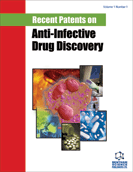Abstract
Background: Orf virus is a DNA virus that belongs to the Parapoxvirus genus. The virus is a causative agent of orf in humans or contagious ecthyma in animals which is mostly seen in sheep, goat and cattle.
Discussion: Orf is an emerging zoonosis with an increasing number of worldwide outbreaks that have been reported. It is a contagious disease that tends to spread very fast among livestock. The morbidity rate is very high, particularly among young unvaccinated animals. The fatality rate is low but can be seen due to secondary infections. The disease has a significant effect on livestock health and may lead to economical losses. Humans may become infected if they have a direct contact with animal lesions. The disease is seen as a cutaneous lesion with a mild clinical outcome. Human to human transmission exists but is very rare. Nosocomial transmission was reported with one outbreak in a burn unit. The diagnosis is mostly based on the history of animal contact and clinical findings. Molecular tests are used to confirm clinical diagnose. There is no specific treatment but a live vaccine is available for animals. Surveillance implementations and infection control measurements are very important for the prevention of infection. Currently, there are limited studies on orf or contagious ecthyma. It has been observed that there are few studies that have resulted in patents.
Conclusion: The aim of this paper was to review the current relevant patents, epidemiological features, clinical presentations, the diagnosis and treatment of orf.
Keywords: Parapox virus, human Orf, animal Orf, contagious ecthyma, epidemiology, etiology.
Graphical Abstract
 52
52 5
5





















